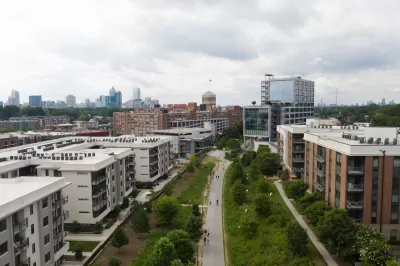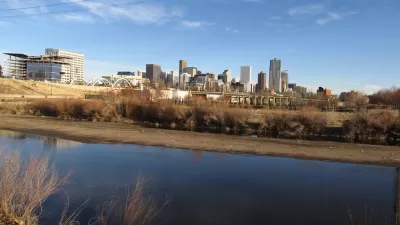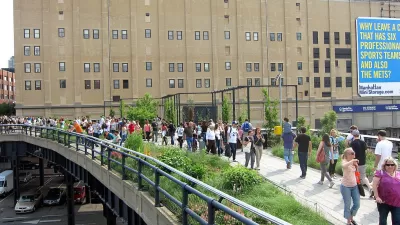New parks are great—but some projects displace the very people the green spaces are meant to serve.

“Again and again, researchers have found that access to urban green spaces – from parks to gardens to greenways – positively impacts multiple measures of health, such as community satisfaction, social cohesion and access to healthy foods.”
However, caution Viniece Jennings, Alessandro Rigolon, and Na’Taki Osborne in Next City, new parks can also lead to the displacement of low-income residents and, “perhaps counterintuitively, green gentrification can also exacerbate inequities in health, finances, quality of life and — ironically — access to green spaces.”
As the authors explain, “A scoping review on green gentrification and health examines numerous studies wherein residents experience a lower sense of community, diminished sense of belonging and less green space usage among long-term residents.” The research shows that increasing property values and a lack of renter protections can put greener cities out of reach for many households. “For example, although affordable housing was initially a part of the vision of the Atlanta Beltline, a shift in priorities and a state ban on rent control (among other factors) diminished this commitment,” the article points out.
“To support health equity as the pathway for everyone to achieve optimal health, cities must address the factors that diminish affordable housing and the consequences of green gentrification.” Some cities are working to address these issues using tools like inclusionary zoning requirements near large parks and rent stabilization initiatives.
The article concludes, “Improving neighborhoods is not the fundamental problem with gentrification and possible residential displacement. It’s the systemic force that aims to set the bar of who has long-term access to quality environments and affordable housing.”
FULL STORY: When Green Spaces Displace Residents, Our Cities’ Health Suffers

Study: Maui’s Plan to Convert Vacation Rentals to Long-Term Housing Could Cause Nearly $1 Billion Economic Loss
The plan would reduce visitor accommodation by 25,% resulting in 1,900 jobs lost.

North Texas Transit Leaders Tout Benefits of TOD for Growing Region
At a summit focused on transit-oriented development, policymakers discussed how North Texas’ expanded light rail system can serve as a tool for economic growth.

Why Should We Subsidize Public Transportation?
Many public transit agencies face financial stress due to rising costs, declining fare revenue, and declining subsidies. Transit advocates must provide a strong business case for increasing public transit funding.

How to Make US Trains Faster
Changes to boarding platforms and a switch to electric trains could improve U.S. passenger rail service without the added cost of high-speed rail.

Columbia’s Revitalized ‘Loop’ Is a Hub for Local Entrepreneurs
A focus on small businesses is helping a commercial corridor in Columbia, Missouri thrive.

Invasive Insect Threatens Minnesota’s Ash Forests
The Emerald Ash Borer is a rapidly spreading invasive pest threatening Minnesota’s ash trees, and homeowners are encouraged to plant diverse replacement species, avoid moving ash firewood, and monitor for signs of infestation.
Urban Design for Planners 1: Software Tools
This six-course series explores essential urban design concepts using open source software and equips planners with the tools they need to participate fully in the urban design process.
Planning for Universal Design
Learn the tools for implementing Universal Design in planning regulations.
Ascent Environmental
Borough of Carlisle
Institute for Housing and Urban Development Studies (IHS)
City of Grandview
Harvard GSD Executive Education
Toledo-Lucas County Plan Commissions
Salt Lake City
NYU Wagner Graduate School of Public Service





























